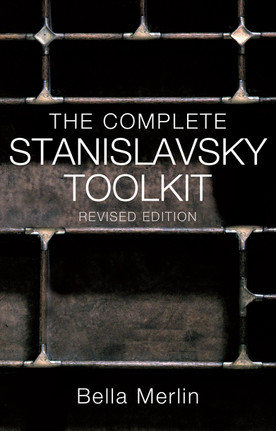Diving Deep into Character: Your Path to Crafting Character Biographies

Welcome to the realm where stories come alive, and characters breathe with a vitality that stirs the soul! I'm thrilled to have you on this journey of discovery, where we delve into the heart of crafting character bios that will not only provide you with a solid foundation as an actor but will ignite your process, letting your prowess shine for all to see.
As an acting coach, I am frequently asked where to begin when creating a character - and how to enhance your connection to that character, their actions and behaviours. I firmly believe that the character biography is where it all starts coming together. It's like a woolly jumper fraying at the seems: once you start pulling at it, it's hard to stop! It may sound like an obvious place to start, but you would be amazed by how many seasoned professionals skip the step. Remember, as an actor, 95% of your work is done in preparation - be that before you step on set, in front of a camera for a self-tape, or into a rehearsal room (way before the point of even stepping on stage!). This early - but vital - stage of the process combines your ability as a fact-finding dramatic detective mining into the details of the role with your capacity as an imaginative artist. It brings together your abilities to analyse and to create.
Let it gnaw at your soul. Let it become an obsession.
“If you are looking for something, don't go sit on the seashore and expect it to come and find you;
you must search, search, search with all the stubbornness in you!”
Constantin Stanislavski, Building A Character
The Heartbeat of Character Bios
Picture this: you're not just stepping into a role but into a life.
Understanding the character's building blocks can open up possibilities for you as the actor - and that begins with mining the text for facts. Finding facts and asking questions. You won't receive all of the facts every time, which sometimes leaves you with a longer list of questions and assumptions about the character, but the character biography is where this all comes together as you start to shape the story you will tell.
A well-crafted character bio isn't just a list of traits, it shouldn't just be a sterile process that feels like 'going through the motions'; it's the doorway to understanding the very essence of your character, and it must feel urgent, and it should inspire. Remember, if something isn't interesting to you, it will be all the more difficult to make playable - but be brave as you awaken your curiosity. How can you let even the most seemingly mundane of information spring to life and capture your imagination? A solid - and truly creative - character biography is the secret to unlocking a performance that transcends the ordinary and becomes extraordinary.

Helpful Hints and Tips:
Even if the fact or detail you find appears somewhat dry, find what playable possibility it opens up. Say the character was born in the 1980s. What does this open up for you to research, to surround yourself with? Think of images, sights, sounds, politics (anything that whets the appetite of the imagination). Let the mundane springboard you into more visceral, exciting territory that can awaken the imagination.
Unveiling the Elements of Enchantment
Remember, take nothing for granted. Every uncovered fact holds possibility. Crafting a character bio that captures the attention of the audience and the soul of the actor requires us to weave some essential elements:
Roots and Identity: Our characters, like us, are shaped by their past. Dive into their roots, their upbringing, and the cultural tapestry they hail from. This is the foundation on which their uniqueness stands. Some things will feel closer to you, and your own lived experience and other considerations will feel more like a leap, but no matter how close or far the character seems to be from you, you will need to engage in the act of transformation (both internal and external), so, be specific! Even when you transform, it will always be you: don't fear losing yourself, instead, be excited about what your unique perspective brings to the story.
Desires and Ambitions: Ah, aspirations! What fuels our characters' fire? What dreams do they chase with unyielding determination? Uncover the depths of their yearnings, their needs ... and their fears. What do they see in their mind's eye every night before they drift off to sleep?
Confrontations and Crucibles: Stories thrive on conflicts, both inner and outer. Our characters wrestle with fears, face dilemmas, and brave challenges. This is where their strength and vulnerabilities entwine. I always encourage actors to mine down as deeply into a character's fears as their dreams. It's always a useful tool to ask yourself, 'when do they feel fear?', as it frequently shapes our world and our actions to a far greater extent.
Connections That Bind: Life is an intricate web of relationships, and so is the world of storytelling. Map out the ties that define your character – friends, family, rivals – they all shape your character's narrative. Really mine down into the relationships they have in the play as we place great value in these. Don't limit it to those that we see them interact with. They might not mention their family, but this, in itself, is fascinating.
Riding the Emotional Waves: Emotions are the colours on an actor's palette. Understand what stirs your character's emotions – joy, sorrow, anger – and let those emotions surge through your performance. But, remember, we do not aim for emotion, as we cannot play it whilst remaining outwardly engaged. Ride the wave of them like an expert surfer, use them as your fuel; but, remember they are bi-products of action. Always focus on what you are doing, not what you are feeling!
Unearthing Backstories: Every character carries a history that whispers through their actions. Unearth the pivotal moments that paved the way for your character's present. This backstory is your treasure trove. Populate it with timelines and find sources to bring life to those 'memories' if you can. Collect sources to awaken the senses of the imagination. I always recommend visualising key life moments to fully submerge yourself in the imaginative world you are creating. If you can, why not even improvise key moments with your fellow actors so that you have a shared experience of these events? Some directors will factor this into the rehearsal process, but there's nothing to stop you from digging deeper should you wish.

Helpful Hints and Tips:
When writing out statements pertaining to your character, try to write them out as simply that, statements. Don't just make it a cold list of facts. And always write them in the first person to make the distance of the transformative journey seem a little shorter!
Embarking on Your Character-Building Odyssey
Crafting a character bio shouldn't be a task; it's a voyage of self-discovery. And, whilst acting isn't therapy, this voyage of discovery will inescapably tell you more about yourself every time you undertake it. Here's your route:
Plunge into Research: Immerse yourself in the script's world. Feel its heartbeat. Understand the era, the place, and the ethos that cradle your character's journey - unlock what is known as the 'planes' of the text. Think about: eternal factors (the dramatic structure of the script, its main events and form); social situations (the historical, political and context-based information about the world); literary influences (the style of the writing, the genre); aesthetic considerations (the writer's chosen theatrical devices and the artistic vision for the production); psychological elements (the inner-workings of the character); physical components (external considerations for the character, and the actions they undertake); and personal creative feelings (your personal connection to the character and the play).
Interrogate and Reflect: Each section of our character bio template is a portal. As you answer, question your character's motives and choices. Reflect on their essence and fill them out to make them tangible. Again, collect sources that this springboard takes you to, and ensure that you engage all the senses of the imagination. Every actor will have a preference over what source material stirs and moves them, and the more you engage with your craft and the process, the more you will understand what works for you and what transports you. Be prepared that this may shift based on the needs of the project - and as you grow as an artist, so don't take anything for granted. Beware of declaring that you know your process and being limited by it: it is always shifting and changing like you.
Unearth the Depths: Look beyond the surface. Unearth the hidden gems in your character's psyche. How do their experiences shape them? What sets them apart?
Polish Your Gem: Just like a diamond in the rough, your character bio needs refining. Fine-tune the facets until they sparkle harmoniously with your character's soul. And, remember, sometimes frustratingly so, the work never ends when dealing with a fully rounded character: there's always more to know, more to discover. Watch out for patterns and repetitions, they always signify something substantial to unlock in your character.
Seek the Wisdom of the Wise: Don't hesitate to tap into the wellspring of wisdom that seasoned mentors and coaches like myself provide. Their insights can reshape your perspective and offer new obstacles to rejuvenate your process and breathe new life into your craft.

Helpful Hints and Tips:
Constructing a timeline of events in the play - and for your character - based on the discoveries you make whilst reading the play, will set you in good stead as you grow your character biography. I always advise formulating a list of facts and questions from the play first before embarking on fleshing out the character's world. Some also find it helpful to complete character lists too before committing to a character biography (a list of things the character says about themselves, another containing what they say about others, and a final list about what other characters say about them).
Let the art of character bio creation be your portal to a world of authentic, vivid, and unforgettable storytelling. It is the departure point for you to breathe life into your performances and carve a path toward dynamic choices and bold portrayals.
The attached character biography template should be a starting point.
Download Your Character Biography Template Here
Download it, use it, explore it. But, most importantly, modify it, grow it and adapt it as your process sophisticates and new questions arise with each project you dance with.
Wanting To Dig A Little Deeper?
If you are looking to delve deeper into the journey of developing a character, be sure to give these books a once over. They will be a welcome addition to your bookcase!
Don't forget to check out the other books recommended by RDD Coaching to help you grow your craft and develop your process. You can find the resources page here.
Unleash Your Potential with Richard Delaney's Coaching Sessions
Remember, every character you embody, much like you, carries a story worth sharing. Ready to take this work to the next level? Let RDD Coaching enhance your ability to create fully-rounded and dynamic characters by awakening your curiosity, adding layers that you never knew existed. Explore ways to breathe life into the stories you tell, honouring your artistic voice and getting you noticed!
All new clients are entitled to a free online consultation before committing to their training journey. Coaching sessions can take place in a variety of settings to work with your availability, budget and requirements. For more information on available coaching packages, check out Richard's coaching pages here.









Comments